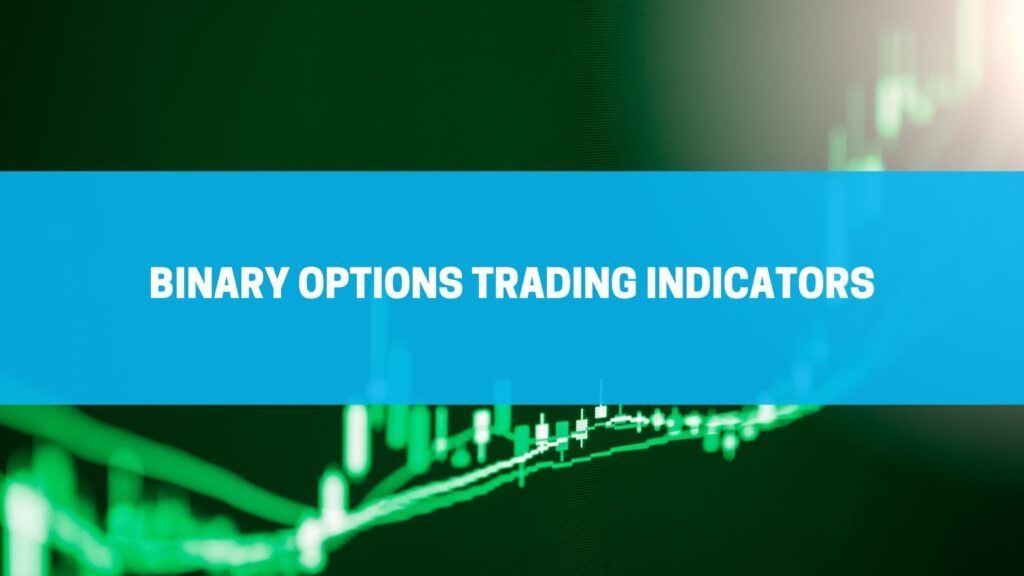A binary options indicator is a tool traders use to identify potential trading opportunities in the market. They're usually based on technical analysis techniques, such as moving averages, trend lines, and momentum indicators.
However, they can also be based on fundamental analysis or a combination of both.
Some popular binary options indicators include the RSI (Relative Strength Index), the MACD (Moving Average Convergence Divergence), and the Bollinger Bands.
However, note that binary options indicators aren’t a guarantee of future market performance and should be used in conjunction with other forms of analysis.
Now, let’s discuss binary options indicators in detail, how they work, and more.
Table of Contents
Popular Binary Options Indicators
Binary options traders use several popular indicators to help them make trading decisions and help their binary options trading strategies.
Here are popular binary options indicators that traders use:
- Moving Averages
- Bollinger Bands
- Relative Strength Index (RSI)
- Stochastic Oscillator
- MACD
- Wilder’s Directional Movement Index (DMI)
- Commodity Channel Index (CCI)
Now let's dive deeper into each of these indicators for trading binary options.
1. Moving Averages
This indicator calculates the average price of an asset over a specific time. It’s often used to identify trends and determine whether an investment is overbought or oversold.
2. Bollinger Bands
This indicator uses moving averages and standard deviation to create bands around the price of an asset. The bands contract and expand based on volatility and can be used to identify potential buy or sell signals.
3. Relative Strength Index (RSI)
This indicator compares the magnitude of recent gains to recent losses in an asset’s price and can be used to identify overbought or oversold conditions.
4. Stochastic Oscillator
This indicator compares an asset’s closing price to its price range over a certain time and can be used to identify potential buy or sell signals.
5. MACD
The trend-following momentum indicator, Moving Average Convergence Divergence, represents the connection between two changing averages of an asset’s price.
You can use MACD to identify potential buy or sell signals.
However, note that these indicators aren’t 100% accurate and should be combined with other technical and fundamental analyses.
In other words, these indicators don’t guarantee future performances, as trading binary options always comes with a risk.
6. Wilder’s Directional Movement Index (DMI)
The technical indicator, Wilder’s Directional Movement Index (DMI), also known as the Average Directional Index (ADX), can recognize the strength of a trend in the market.
ADX consists of three lines: the ADX line, the Positive Directional Indicator (+DI), and the Negative Directional Indicator (-DI).
The ADX line measures the trend’s strength, with values above 25 indicating a strong direction and below 20 indicating a weak movement.
The +DI and -DI lines are used to determine the direction of the trend, with +DI indicating an upward trend and -DI indicating a downward trend.
The DMI can determine whether a market is trending or ranging and help traders identify potential entry and exit points.
However, like other indicators, it should be used in conjunction with other forms of analysis and not as a standalone indicator.
7. Commodity Channel Index (CCI)
The popular technical indicator, Commodity Channel Index (CCI), was made by Donald Lambert. You can use this indicator to identify cyclical turns in a market.
It compares the current price level to an average price level over a given period. CCI is typically used to identify over-purchased and oversold conditions in a market. It can also identify potential trend changes.
The CCI calculates the difference between the current and average prices, then normalizes the result by dividing it by the mean deviation.
The resulting value is then plotted as a line on a chart.
Values above +100 are considered overbought, and values below -100 are considered oversold. Traders typically use a crossing of the +100 or -100 level to generate buy or sell signals.
It’s important to note that, like other indicators, CCI should not be used in isolation.
Traders should use it with other forms of analysis and market context to make their trading decisions.
Additionally, CCI is typically used in the analysis of commodity and futures markets but can also be applied to other markets, such as stocks or currency markets.
5 Tips for Using Technical Binary Options Indicators
The following tips can help you maximize the benefits you get from using indicators:
1. Use Multiple Indicators
Using multiple indicators can help you better understand market conditions and confirm signals.
2. Use Indicators That Complement Each Other
Using indicators that measure different aspects of the market can help you gain a better understanding of market conditions.
For example, a trend indicator like the ADX and an oscillator like the RSI can help you determine the trend and the potential overbought or oversold conditions.
3. Choose the Right Time Frame
Different indicators are suitable for different time frames.
For example, an indicator well suited for a 5-minute chart may not be as useful on a daily chart. Be sure to choose appropriate indicators for the time frame.
4. Be Aware of Market Conditions
Binary options trading is highly dependent on market conditions.
It’s important to be aware of economic events, news, and other market-moving factors affecting your trading asset.
5. Understand the Expiration Time
Binary options have a fixed expiration time. So, choosing appropriate indicators for your trade’s expiration time is important.
Short-term indicators like the RSI may be more appropriate for 60-second options, while longer-term indicators like the ADX may be more appropriate for end-of-day options.
What is a binary indicator?
A binary indicator is a variable in computer science and statistics that can take on one of two possible values, often represented as 0 or 1.
These values can indicate the presence or absence of a certain feature or tell whether a certain condition is true or false.
In many cases, binary indicators are used as inputs to machine learning models.
For example, in a model that predicts email spam, a binary indicator can tell if the email has a certain word or phrase. The indicator’s value will be 1 if the word or phrase is present in the email and 0 if it’s not.
Binary indicators can also create a categorical variable from a continuous variable.
For example, suppose a dataset contains the ages of individuals. A binary indicator could indicate if someone is above or below a certain age threshold, such as 18 or 65.
Binary indicators can also be used as dependent variables in a model.
For example, in a model that predicts whether an individual will default on a loan, the binary indicator would be 1 if the individual defaults and 0 if they don't.
In general, binary indicators are simple and easy to use.
Still, they can be less informative than other variables, such as continuous or categorical variables with more than two levels.
Conclusion
The effectiveness of technical indicators can vary depending on the specific option and the market conditions.
Some indicators, such as trend indicators like the ADX, can be very effective in identifying the direction and strength of a trend, while others, like the RSI, can help identify overbought and oversold conditions.
Remember that no technical indicator is perfect and can provide false signals, especially in choppy markets. Also, indicators are based on past price actions.
They can only provide an estimate of future price movements, so they should be used together with other forms of analysis and market context to trade binary options.
Additionally, the use of indicators alone may not be enough to be profitable in binary options trading.
Traders need a complete understanding of the markets and use a solid trading strategy that includes money management, risk management, and proper performance of the underlying asset they’re trading.
In summary, binary options indicators can be useful tools for traders.
However, you shouldn’t use these indicators as standalone tools. They provide the best results alongside other analysis and market context forms.

